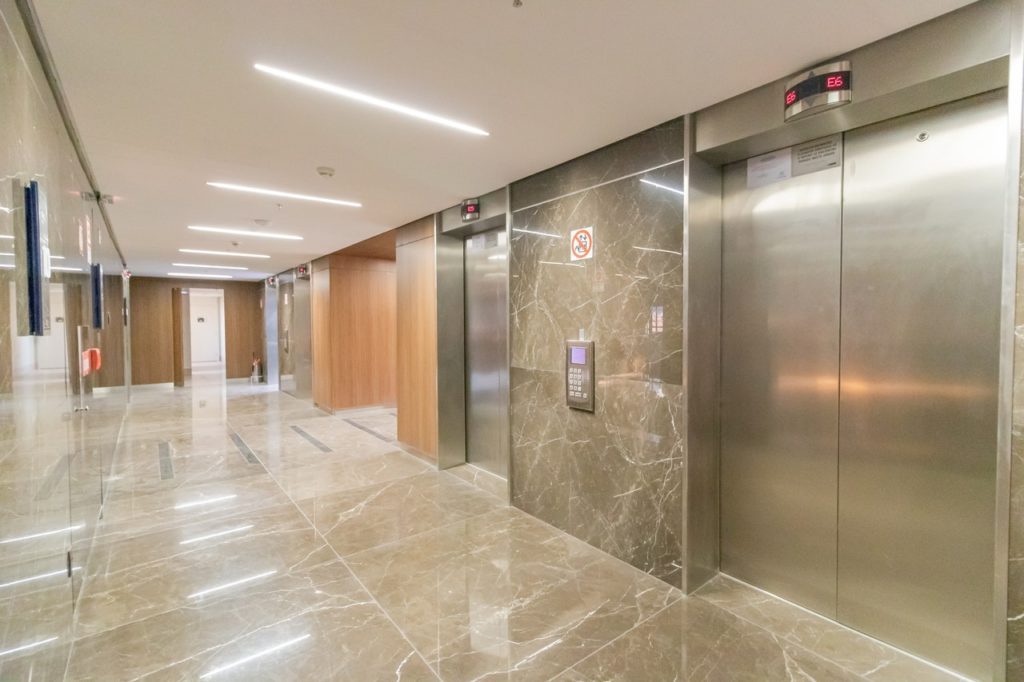I learned this today. Before the invention of the elevator (lift for my British friends), wealthy people lived on the lower floors of a building because they didn’t want to climb stairs. People had no choice and climbed the stairs to the cheaper apartments.
Before the invention of the elevator, the highest a building could be built was about eight floors. This wasn’t because of structural limitations, but because people couldn’t reasonably climb more stairs than that. This is why the most expensive apartments in any building were on the bottom two floors. Rich people didn’t want to have to climb stairs. The higher you went, the cheaper the rent.
The elevator has changed where people live in buildings, but it has also changed our cities as well. Because of elevators, modern cities can exist. Elevators have allowed cities to grow up rather than outwards. Pre-elevator cities could sprawl because the world’s population was only about 1.2 billion people. With our population today of 7.8 billion people, cities that couldn’t grow above eight floors would cover the whole face of the Earth. Elevators allowed cities to grow up and multiple families and businesses could exist in the same building.
There have been rope-powered elevators since ancient times. They were usually pulled by animals. The first steam-driven elevators were used in mines to lift the coal to the surface in the early 1800s.
There were different kinds of elevators around by 1850, but people didn’t trust them. It took Elisha Otis’s safety elevator to change that. He invented a brake to stop the elevator if its rope broke. His invention was sound, but it was his ability as a showman that sold it. He demonstrated it at the World’s Fair in New York in 1853. He stood on the elevator platform, and someone cut the rope holding it with an axe. The elevator fell a few inches and his invention stopped it. Orders flooded in.
Elevators were manually operated by people until the mid 20th century. The elevator operators could control the elevator’s speed and they had to time the stops at each floor. In 1900, automatic elevators were invented where you could push a button to choose the floor but people didn’t trust these elevators, so there was always an operator present, even though they weren’t necessary. This stopped in 1945. Ironically, it stopped because the elevator operators went on strike for higher pay. While they were on strike, regular people realized that the elevators really did work without an operator in them, and the elevator operators struck themselves out of a job.
About this time the floor indicator was introduced. When you wait for an elevator, there is an indicator above the doors telling you which floor the elevator is on and you can see as it moves up and down. This is purely for psychological reasons because it has no bearing on how long you will have to wait. Knowing where the elevator is makes it much easier for us to wait than not knowing.
These days elevators run on algorithms that work out the time it will take and which floors to stop at. They can choose to stop or not and they can choose to go up or down. They work out the best way to carry the most people in the shortest time. They know how many people are waiting on which floors, how many people are in each elevator, and how fast the whole system is moving. In a large building with an elevator bank, the AI system might tell you to take elevator 1A to floor 80, then change to elevator 7B to go to the ground. It might seem strange but trust the computer. It has worked out the fastest way for you to get to the floor you want to go to.
Elevator ropes are also being made out of carbon fiber now. The limiting factor in how high an elevator can go is the weight of its rope. At heights close to a km, the weight of the rope is more than the elevator motor can carry. Carbon fiber rope will change this and mean that elevators can go higher, and buildings can consequently be taller.
So, the elevator changed the layout of our cities because buildings could be higher. It also changed where people in the buildings lived. Before elevators, rich people would live low down and the poor people would climb the stairs. After elevators, rich people moved higher for the views. And this is what I learned today.
Sources
https://en.wikipedia.org/wiki/Elevator
https://www.ascensionelevators.com/blog/how-elevators-changed-the-world/
https://www.bbc.com/culture/article/20140819-how-the-lift-changed-everything
https://www.abb-conversations.com/2017/02/how-elevators-changed-the-world/
https://www.worldometers.info/world-population/world-population-by-year/



[…] learned this today. Floor indicators were added to elevators in the 1950s in order to distract people while they waited. The actual waiting time wasn’t as bad […]